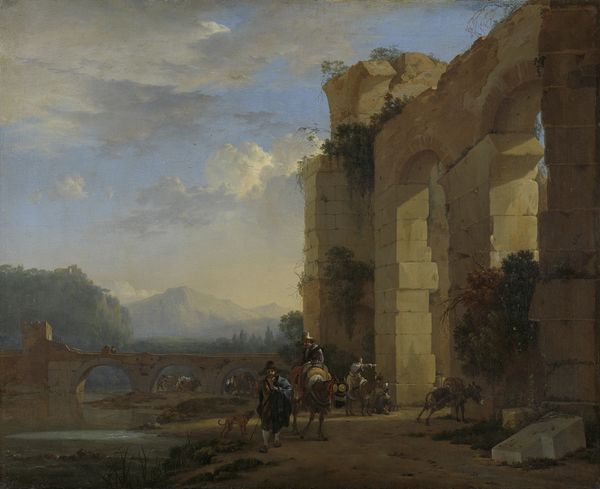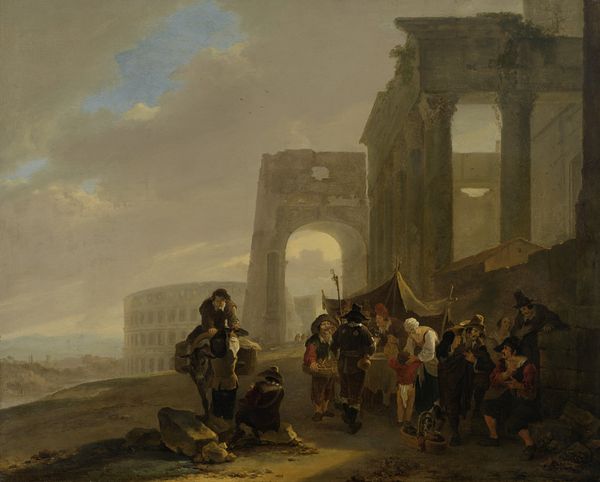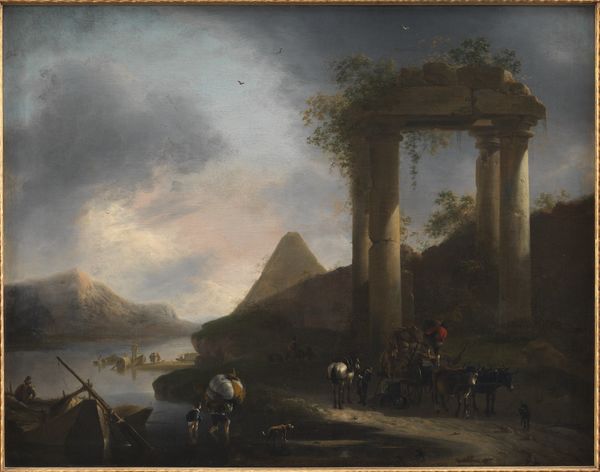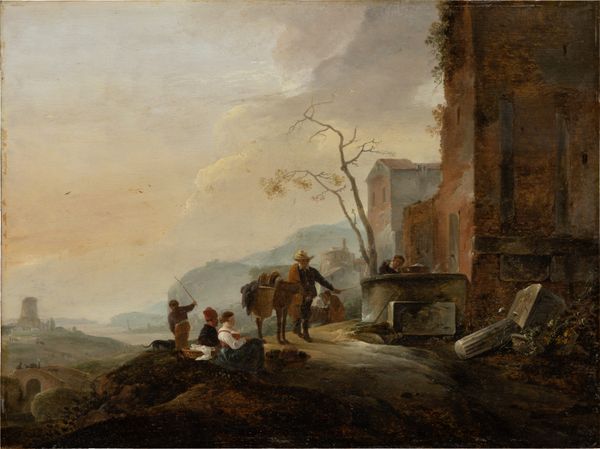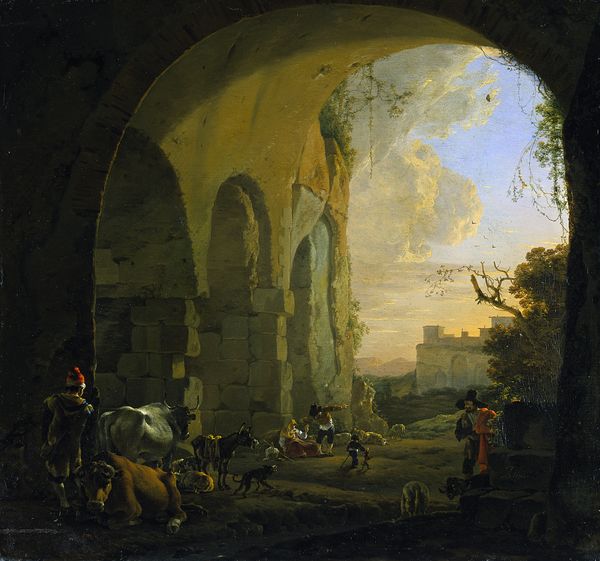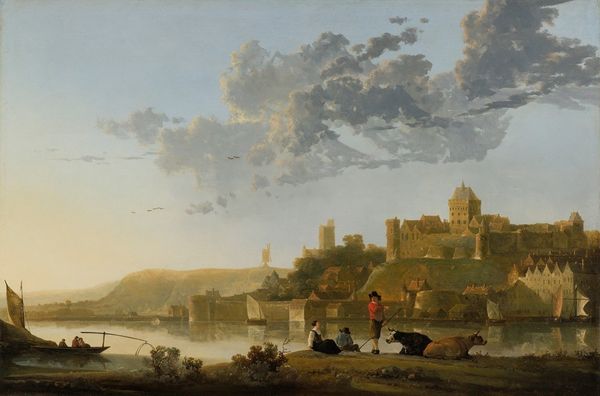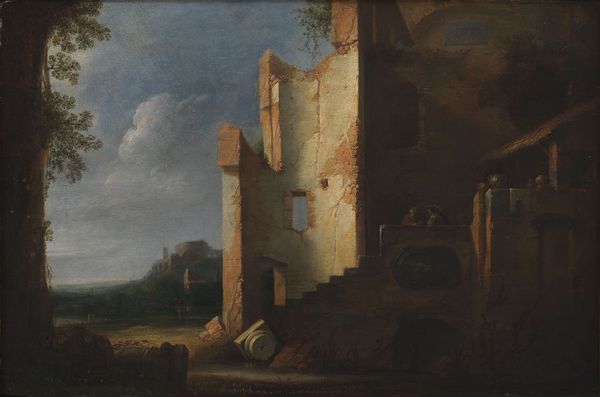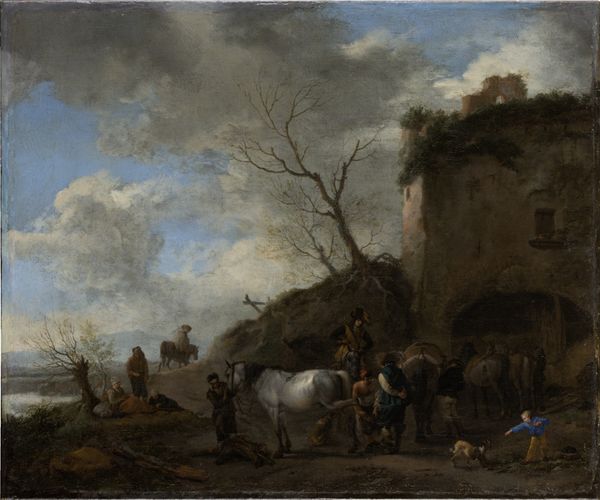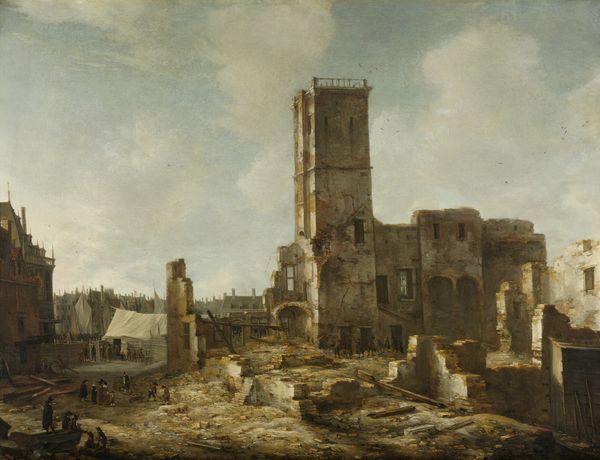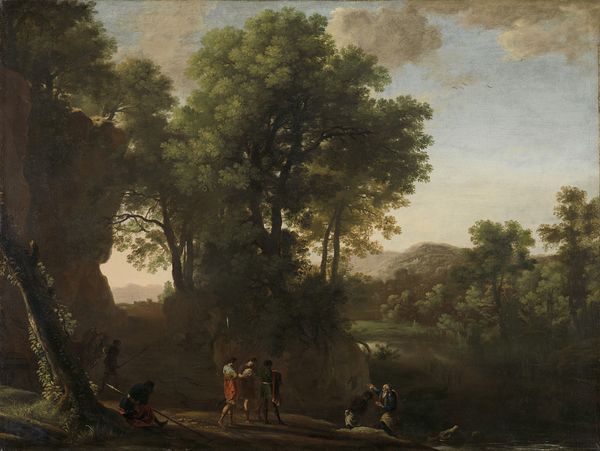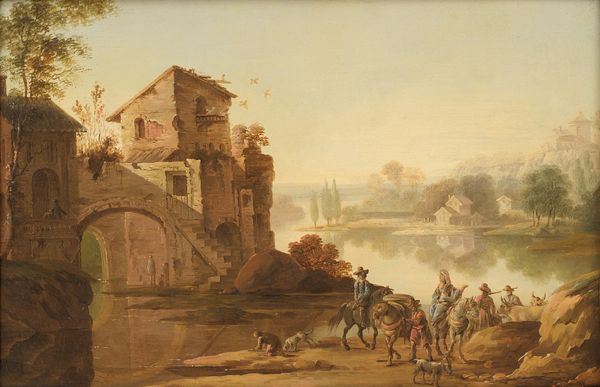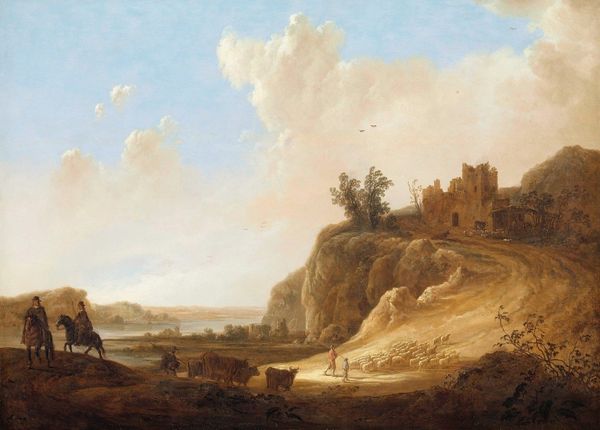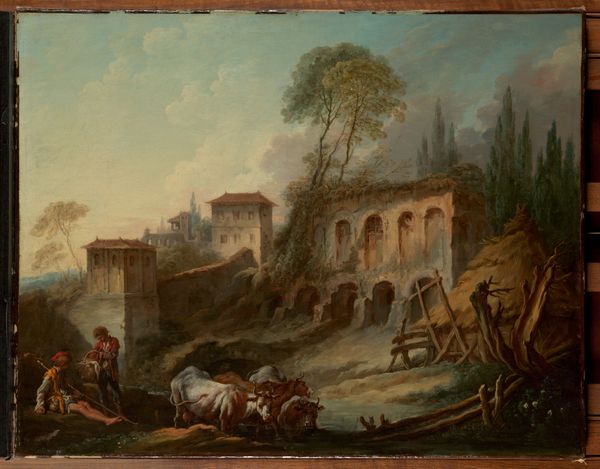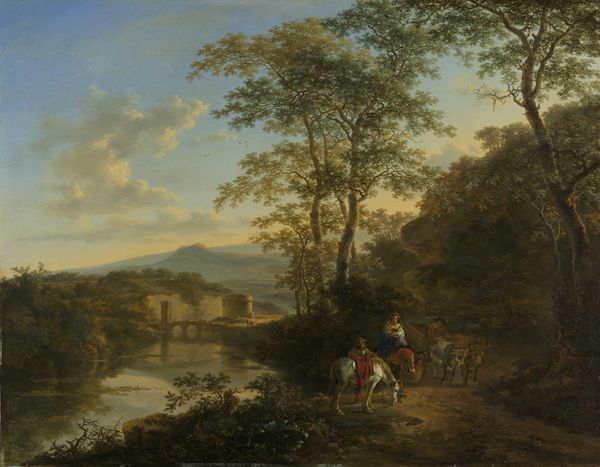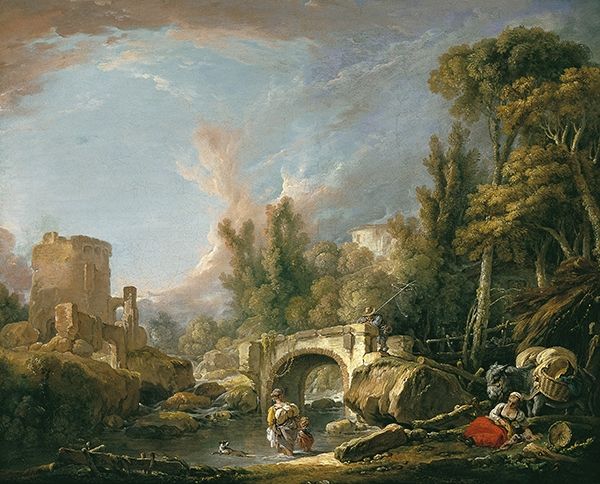
#
fantasy concept art
#
fantasy art
#
impressionist painting style
#
possibly oil pastel
#
oil painting
#
underpainting
#
painting painterly
#
watercolour illustration
#
watercolor
#
environment sketch
Dimensions: overall: 41.2 × 54 cm (16 1/4 × 21 1/4 in.)
Copyright: National Gallery of Art: CC0 1.0
Editor: So, this is Jan Asselijn's "The Tiber River with the Ponte Molle at Sunset," painted around 1650. The light is just gorgeous. What do you see in the composition, in how the image is arranged? Curator: The arrangement strikes me as carefully structured around contrasts. Notice the solid, man-made architecture of the bridge on the right, weighed against the open, natural expanse of the landscape to the left. The bridge itself provides an interplay of light and shadow, framing smaller vignettes of human activity. It appears almost as if there is a geometric pattern within the arches to offset nature in its rawest form in the distance. Editor: That's fascinating. So the artist used structure and placement to draw our eyes to specific spots? Curator: Precisely. The warm palette creates a serene atmosphere overall. Now, observe the diagonal line created by the bridge and its reflection in the water. It dissects the canvas, further emphasizing that contrast between architectural permanence and the ever-flowing river, also mirrored by the sunset light versus shadows beneath. Editor: It's amazing how the use of diagonals gives a sensation of movement! Do you notice that also with the small figures within the bridge? Curator: Indeed, their presence provides a focal point that highlights the themes. Do the characters beneath the bridge have an interaction with the landscape, and each other, as the cattle wades through the river as well? It’s a juxtaposition. I see not just a pretty picture, but a deeper commentary on human intervention within the natural world and a perspective on classical ruin within landscape painting. Editor: I'm now noticing so many relationships. This image makes me want to dive deeper. Curator: Good. Because the best works continue to yield fresh interpretations.
Comments
No comments
Be the first to comment and join the conversation on the ultimate creative platform.
